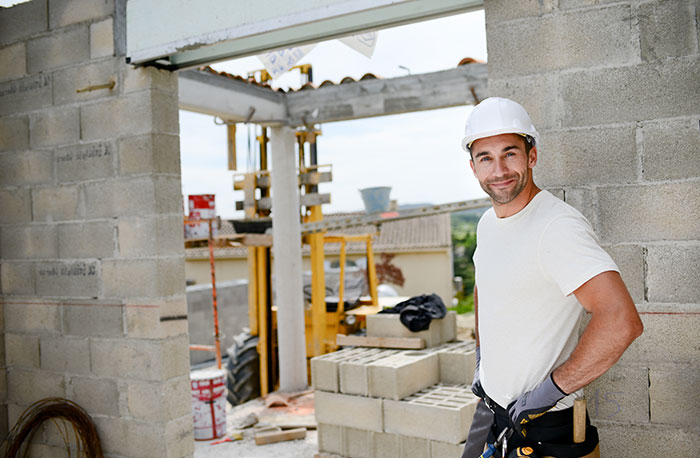Angi Releases Annual Skilled Trades Report

Photo credit: W PRODUCTION/ Adobe Stock
September 22, 2021
While U.S. workers express discontent in their jobs and careers leading to what is now called the “Great Resignation,” there is one industry that stands apart: the skilled home trades. According to Angi’s second-annual Skilled Trades in America Report, job satisfaction in the skilled trades remains remarkably high, with 83% of tradespeople satisfied in their choice of work. However, despite high job satisfaction, high pay and high levels of entrepreneurship, the skilled trades face a worsening labor shortage, and over three-quarters of tradespeople (77%) view it as a problem that has gotten worse over the last year.
Employee engagement in the U.S. is at a low rate of 34% and workers’ daily stress is at a record high. The recent resignations from jobs where employees feel disengaged leaves a sizeable workforce looking for opportunities to find future careers where they feel engaged and like they are doing something meaningful each day. Meanwhile, the top driver for overall satisfaction in the skilled home trades is the meaning and value in the work.
“On one side you have disengaged workers leaving their jobs and on the other you have skilled home tradespeople saying they are happy because they find meaning and value in their work, making it a unique and opportune time to attract new talent to these careers, while also improving employee engagement across the country,” said Oisin Hanrahan, CEO at Angi. “It’s time to recognize that the skilled trades offer the opportunity for people to find engaging and high-paying careers. Everywhere there is a home, there is a network of small businesses that support that home and homeowner, and these are extremely needed and valued careers.”
Since the onset of the COVID-19 pandemic, there has been a steady increase in demand for home services as homeowners take on more projects and spend more money on their homes than before. Yet, despite demand for the work and satisfaction among workers, the skilled trades have been experiencing a chronic labor shortage and, according to this year’s report, the perception among tradespeople is that the shortage continues to worsen. Findings show that 68% of tradespeople have struggled to hire skilled workers and more than one-third (35%) are slightly or extremely understaffed. More than half of tradespeople (52%) say a lack of available workforce is stunting their growth, and 68% say they could grow their business if they could find more available workers.
The skilled home workforce is also aging, with more than a quarter (27%) within 10 years of the social security retirement age of 62. However, as an entrepreneurial industry with nearly half of tradespeople as single owners and an additional 20% as part of small partnerships or LLCs, there is both a need and opportunity for younger generations to pursue and shape their own careers in the skilled home trades.
This is also an opportune time for the industry to expand recruiting efforts to underrepresented groups, such as women and BIPOC workers. While less than 3% each of electricians, plumbers and overall construction supervisors are female, nearly 9 out of 10 tradespeople believe making the trades more welcoming to women would have a modest or major impact on getting more people involved in the trades, and more than half (54%) agree that more women would join the trades if we built a clearer career path for them. These findings highlight diversifying recruitment efforts as a key part of the solution to overcoming the labor shortage.
“In addition to providing engagement for the disengaged is the opportunity to diversify the skilled home trades with minorities that have been traditionally underrepresented in the industry,” added Hanrahan. “By taking a fresh look at how and who the skilled trades are recruiting, there is a great opportunity to help people find meaningful work while also starting to tackle what has become a chronic labor shortage.”
Additional findings:
- Material shortages impacted more than 8 of 10 tradespeople in lumber, flooring, roofing and other fixtures
- The labor shortage is worsening: 77% of tradespeople view it as a problem compared to 71% a year ago
- 74% of tradespeople shift their mix of work between existing residential construction and other forms of work (incl. commercial buildings and new construction), with 60% citing changing market demand as the primary reason for shifting work mix
- The skilled trades are aging: the median age of 43 is roughly 10% older than the general population
- Nearly half of all pros adopted some form of expanded digital payment in the last year
Read the full Skilled Trades in America report here.
More News
April 25, 2024 | Awards & Events
2024 Coverings Installation & Design Award Winners Announced
April 24, 2024 | People
Oatey Announces New COO and CCO
April 23, 2024 | Trends & Inspirations
Sustainability Report: More Education Needed for Green K&B Design
April 22, 2024 | Awards & Events, Trends & Inspirations
A Look Inside the 2024 Atlanta Homes & Lifestyles Southeastern Designer Showhouse
April 22, 2024 | KBB Collective
Top Designer Shares Favorite KBIS 2024 Products
April 2, 2024 | Sponsored
Whirlpool Corp. Brings Purposeful Innovation Home